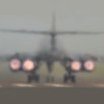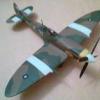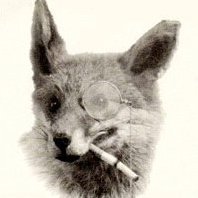-
Posts
175 -
Joined
-
Last visited
About Wizball
- Birthday 04/07/1972
Profile Information
-
Gender
Male
-
Location
Sweden
Recent Profile Visitors
1,677 profile views
Wizball's Achievements

New Member (2/9)
27
Reputation
-
Have to thank everyone again for their helpful contributions!
-
Of course! That was the missing piece - when I started to assume the top one was blue grey I was led astray. Thank you - blue grey it is. A rather striking scheme, I thought.
-
Wow, lot of nice photos in those threads - apparently Wessex has been painted in every color imaginable over the years... Second thread I saw this: Which do mostly look like blue-grey, perhaps? I'm not familiar enough with the colors to tell for sure if that's Oxford blue instead Did find this: where some claim they were never painted in Oxford, only Lynxes were.
-
I'm sitting here with a Italieri Wessex HAS.3 and I'm trying to find out what color the blue in the yellow/blue pre-Falkland scheme *really* is. The box features several schemes, this being two of them: ...and in that picture and color callout they claim these are *different* blues, top one being RAF blue-grey (Italieri being their usual helpful selves only give Model Master paint numbers) and bottom one "True blue". But when I scour the internet I see a lot of model choppers painted Yellow/blue-gray, so the bottom scheme should really be the *same* blue as the top one. Anyone better than me at Falkland-era British color schemes?
-
So, really interested in getting myself a pair of nippers. Some mention they've got other DSPIAE stuff as well - anything in particular to recommend? With shipping being a factor I'd rather just order once. Curious about the super glue applicator - what makes it much better than toothpicks, my current method?
-
I haven't done any specific tests, but Medea (it's actually made by Iwata) is cleaning out the paint well enough. It doesn't dissolve the gummier bits of paint (for example the ring that the paint leaves in the cup) but the paint gets out with the help of a Q-tip/earbud just fine. But yes, the stuff might be too weak/not perfectly suitable. Should probably order Vallejos own stuff. I've always removed the needle by unscrewing the cap and nozzle and pulling the needle forward (which means basically a full disassemble, which I'm trying to avoid). After wiping it I reinsert it from the back when everything else is clean and assembled again. That way I avoid getting too much paint through the body into the trigger area, but perhaps I've been doing it wrong? Vodka seems interesting, but isn't it possible to get the same result diluting IPA down to 40%? I thought all alcohols gel-ified Vallejo but I perhaps should try the vodka out!
-
One of the reasons I find airbrushing tedious and not as fun as it could be is that I find myself cleaning the airbrush far more than actually painting. MAIN problem I have is that I find it almost impossible to quickly change colours mid-session. I own two brushes: H&S Silverline (mostly the 0.2 needle but also the 0.4) as the main brush and a Paasche H I use for non-detail work, e.g. varnishes, priming and so on. I mostly (and want to) use Vallejo/AK acrylics. What I TRY to do is paint - tip out the excess paint - flush it through with medea airbrush cleaner - fill it with the new color and continue painting. I do think this should be possible. What happens in reality is that after I've flushed (checking that it sprays cleaner solution) and re-filled the cup NOTHING comes out. I then have to empty the cup again, making a mess of everything, take everything apart, clean thoroughly and THEN I can spray the new colour. My best guess is that rubbery half-dried remains from the surface of the previous colour get in the nozzle and clogs it from inside. Trying to clean the tip from the outside never helps. Does anybody have any guess on what's wrong with my method? Am I being unreasonable? I do think I have other problems related to drying paint as well. Perhaps not thinning it enough in the first place? This manifests as it being difficult to restart painting after putting it down for ten seconds. I read the "drying tip" thread below and I recognize the issue and will try a few of the solutions. With the Paashe I usually can get restarted if I unscrew the nozzle a half turn and then back again and last time I painted a whole 1/35 tank I had to stop mid-session, disassemble and clean the Silverline and then resume painting. Yet again, wiping with a Q-tip from the outside never works. After painting I think I'm just far too anal about cleaning the airbrush and keeping it spotless for next time. I usually spend about 25 minutes cleaning and hating myself the entire time. I guess I should be a bit sloppier and instead deep-clean with my ultrasound cleaner at regular intervals.
-
Ah, Schiffsbodenfarbe III Grau 1 looks to be the code word I was looking for. I thought it was just used for boot-topping. Thank you!
-
I'm in the process of buying paint for a Trumpeter Z-25 but I'm having some issues with colours. It basically comes down to the fact that I'm not a ship modeller normally so I don't get the basics. It would be easier if I just got the Gunze paint the instructions refer to but I prefer Vallejo or AK/Ammo! The Z-25 is in a 1944 fit and operates in the Baltic sea. According to the instructions it has the same colour on the hull and superstructure (Gunze 305) and I see a lot of references to Hellgrau 50. BUT I read in other places that 50 is a pre/early war colour ("before 1942") and there is something called "Baltic scheme" which sounds like a good fit but that is supposedly a three-tone scheme which my destroyer hasn't got. I'm confused. The deck is painted a dark grey (Gunze 308) and there is loads of "dunkelgrau" when I look at Kriegsmarine standard paints. Sometimes I read the deck should be 51 (which is dark but listed as hellgrau!) but more often I see that there is supposed to be a darker grey deck colour but that's listed as just "dark grey" without specifying which of the numerous dunkelgraus it is. Can anyone help me out with the greys? I feel like I'm asking a very simple question here that's obvious to most of you (like, which brown should I use on a BoB spitfire) but I guess it's so basic that no one ever bothers to write it out...
-
"This century" was merely a guideline - I at least want to try and avoid kits older than me like the Revell "northsea trawler" that's still sold today. That said I can't understand why any manufacturer hasn't kitted "Northwestern" of "Deadliest Catch" fame! Free tip right here! According to scalemates the Revell 1936 class destroyer *is* the Zvezda kit. No problem with that and it seem like a worthwhile kit to consider. Accuracy is great but it's not a top priority for a fun summer project so I won't let that scare me off Trumpeter. I do know about their reputation from the aircraft kits I'm more familiar with! It's a pity they don't care too much. Frustrating, since they kit a lot of interesting subjects.
-
Thanks for all the replies! Some of the suggestions are unfortunately outside the Dreadnought to WWII-era I was shooting for but they do seem to be great kits. Browsing the review section I get the feeling, and no one is protesting, that Trumpeter is quite likely what I want. I do spot a fairly new Revell Dresden and/or Emden that also fit the bill as they are represented in World of Warships, a plus for me at least.
-
As a mainly aircraft and tank modeller I'm looking for a new summer project and I'm thinking I want to build a ship. As I've started playing World of Warships I've started to take a interest in Dreadnought to WWII-era ships (hardly original!) but I feel a bit lost browsing the hobby shop sites in unfamiliar categories. I'm thinking something not too large or small or complicated or expensive and my idea of that is a model at about £25-35, 25-35 centimeters in length. Basically a 1/350 destroyer or a 1/700 battleship seem to fit the bill. Oh, and preferably full hull. PE is no hinder but excessive rigging might be... That part I'm scared of. Criteria number one I think is that I want something tooled this century. Ship subjects in particular seem to be riddled with fifty year old molds sitting next to modern top-of-the line toolings. It's a jungle out there! Trumpeter has no really "old" toolings so I've been looking in that direction but on the other hand they don't have the best reputation in general but the Z-25, Warspite and Dreadnought kits seem to get generally good reviews. Does anyone have any advice or recommendations they want to share?
-
Thank you to everyone participating, going to try some of the suggestions!
-
It always worries me slightly that I find the smell of Tamiya very pleasant. I wonder which brain cells I've fried. So we're talking about this range?: Very useful to know they are (with some difficulty) brushable, as I thought they were strictly airbrush like Alclad!
-
I do airframes with mainly Alclad and a airbrush, which works very well. But smaller bits, cockpits and landing gear struts for instance, I like to do with a paint brush. Does anyone have any recommendations? I try to cut back on enamels so preferably acrylic. I used to have a old black top pot of Citadel "mithril silver" which was pretty good BUT when that dried up I bought a new transparent pot that didn't work at all. No pigment, no coverage, basically useless. Now I resorted to Humbrol 11 but I'm sure there are better alternatives out there!









